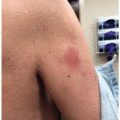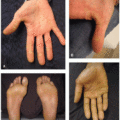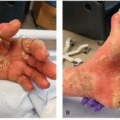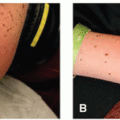Mucositis
Shikha Walia
Jennifer Nam Choi
CYTOTOXIC CHEMOTHERAPY AND RADIATION
In the context of anticancer therapy, the oral mucosa is a commonly involved site of inflammation, ulceration, and potential subsequent infection, leading to oral mucositis (OM). OM is estimated to occur in 20% to 40% of patients on conventional cytotoxic chemotherapy. Among those receiving high-dose chemotherapy, the incidence can reach up to 90%.1
The clinical course of OM is variable depending on the inciting insult. Symptoms of chemotherapy-induced mucositis typically begin near postinfusion day 4. Conversely, OM due to radiation therapy exposure occurs within the first 2 weeks of treatment. The timing of OM development secondary to newer anticancer therapies has not been fully established. The risk of recurrent disease increases with subsequent chemotherapy cycles in patients who have previously developed OM.
OM affects the nonkeratinized mucosa, most commonly presenting over the buccal mucosa, floor of the mouth, and ventral and lateral tongue (Figure 17.1). Keratinized structures such as the hard palate and dorsal tongue are often spared. Examination classically reveals erythematous, clean-based erosions. The most clinically significant lesion is ulcer formation, which may be focal or diffuse. Common areas of ulceration include the buccal mucosa, ventral and lateral tongue, soft palate, and vermillion lips. Ulcers will present with uneven borders and may or may not present with a necrotic pseudomembrane.2 The most common cytotoxic chemotherapy agents that cause OM include alkylating agents (melphalan), anthracyclines (doxorubicin), antimetabolites (cytarabine, methotrexate), antitumor antibiotics, taxanes, and topoisomerase inhibitors (etoposide). Radiation therapy with cumulative doses of 10 to 20 Gy, particularly local radiation of head and neck sites, is another very common cause of OM.2
HEMATOPOIETIC STEM CELL TRANSPLANT RECIPIENTS
OM in the setting of a hematopoietic stem cell transplant (HSCT) recipient highlights another cause of this anticancer therapy-related toxicity. Unfortunately, severe mucositis (grade ≥3) develops in up to two-thirds of HSCT patients receiving myeloablative conditioning prior to the transplant.3
Stay updated, free articles. Join our Telegram channel

Full access? Get Clinical Tree







